
RIDING YOUR MOUNTAIN BIKE IN UNSTABLE CONDITIONS
We will never be in full control of nature, and sooner or later we will come across unstable conditions we need to ride through. We can get an idea of our technical skills according to how well we cope with such conditions. If we are able to ride on all kinds of loose surface, we become experienced riders ready to tackle any kind of terrain.
RIDING OVER ROOTS AND STONES
When riding over roots, the approach should be as vertical as possible, taking the weight off the front wheel to avoid losing momentum. If we need to pedal, use a lower gear and therefore a higher pedalling frequency. Any pedalling should always be done between the obstacles.
RIDING THROUGH SAND
Riding in deep sand is very demanding. The front wheel sinks into the sand and ruts can easily take you off your intended direction. You should shift your body weight backwards above the rear wheel to get as much grip as possible. This helps the unweighted front wheel get over the sand more easily. When riding in sand, it is better to stay in the saddle and pedal smoothly with a low gear.
RIDING IN MUDDY CONDITIONS
The technique is similar to that for riding in sand. Again, we recommend riding in the saddle with a lower gear, which enables us to maintain our speed. We hold the handlebars firmly but not too tightly. The elbows are loose and ready to react to any slight skidding caused by the uneven layers of the slippery surface. We should keep looking ahead.
RIVER CROSSING
The trickiest thing about a river crossing is the difficult-to-predict factors like the depth of the water, the composition of the bottom, and the strength of the current. This means it is important to gain some speed before you enter the water. We approach a river standing out of the saddle and keep our eyes on the other side. Just before entering the water, we shift our centre of gravity backwards and lift the front wheel. If the situation requires pedalling through the water, we ride with our centre of gravity on the saddle. We never brake while riding through water.
RIDING THROUGH A PUDDLE
One option is to jump over the puddle, but if this is not possible we use the same principles we apply for river crossings. We ride into the puddle with the pedals lined up horizontally, shift our centre of gravity backwards and lift the front wheel. We lead the bike forward by directing our weight onto the pedals and keep looking in the direction we want to go.
RIDING IN SNOW
Riding in snow on a fat bike can be great fun. However, if we do not own a fat bike, we can still manage on our regular mountain bike. We recommend lowering the tire pressure. As deep snow is unstable, we use lower gears and keep pedalling. We should avoid any quick, sharp movements. We should also watch out for any ice under the snow, as this can cause us to lose control.
 MTB Riding Technique Next lesson
MTB Riding Technique Next lesson The basic principles when riding in a group
The basic principles when riding in a group
Previous lesson Giving hand signals, keeping balance and wheelies
Giving hand signals, keeping balance and wheelies

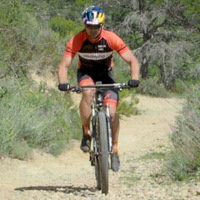
Getting the right mountain bike
Lesson 1

Setting up a mountain bike
Lesson 2
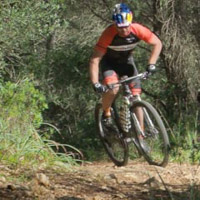
Climbing on a mountain bike
Lesson 3

Starting off uphill and getting off the bike
Lesson 4
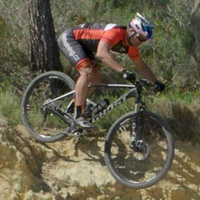
Descending on a mountain bike
Lesson 5

Riding through a corner on a mountain bike
Lesson 6
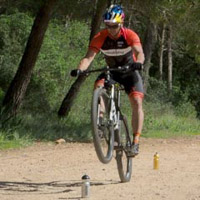
Getting over an obstacle and the Bunny Hop technique
Lesson 7
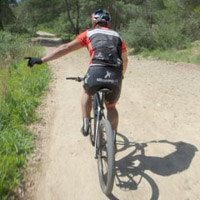
Giving hand signals, keeping balance and wheelies
Lesson 8

The basic principles when riding in a group
Lesson 10








